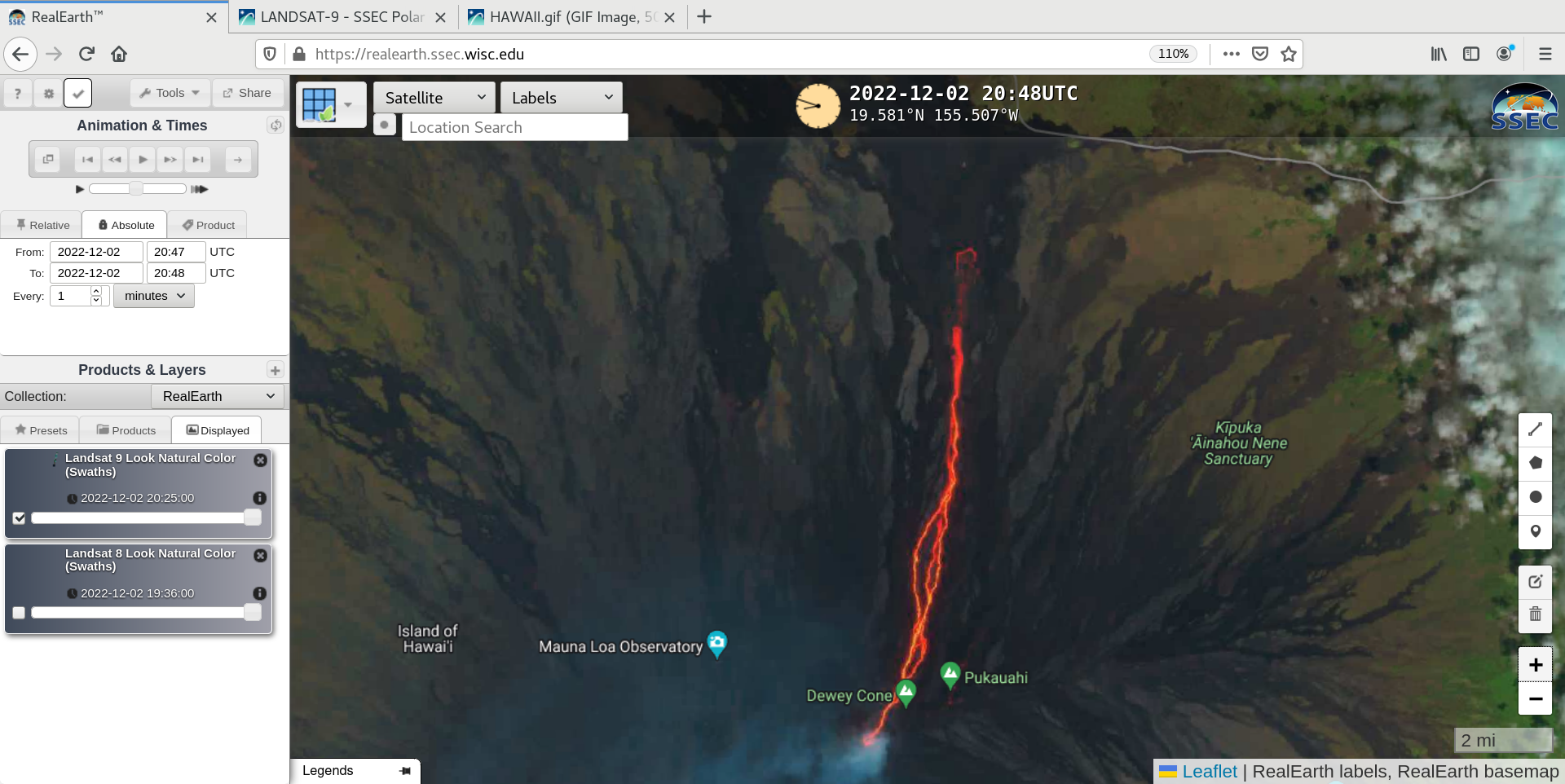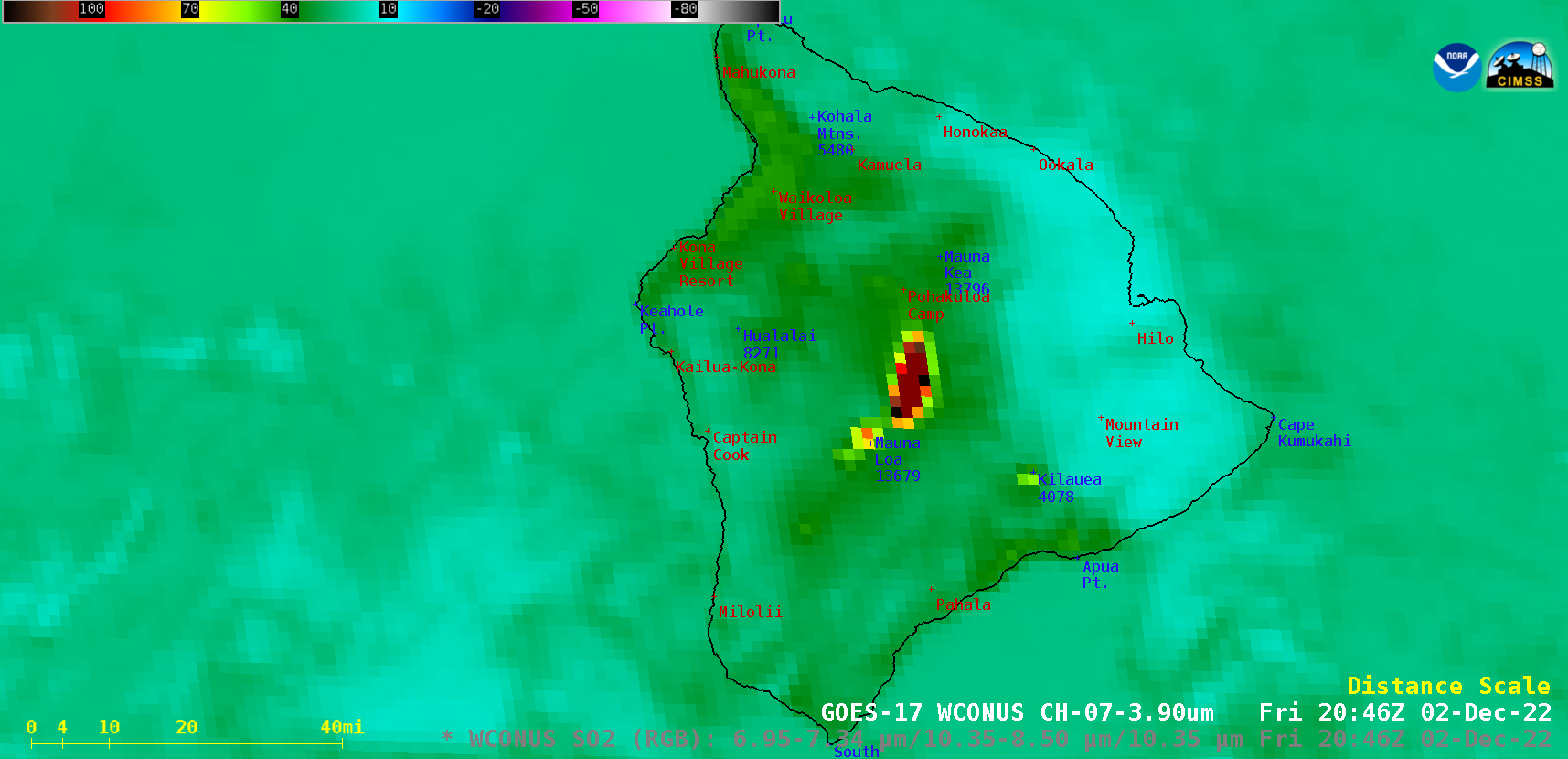Landsat and GOES signatures of the Mauna Loa eruption
A timely overpass of Landsat-9 provided a 30-meter resolution “Natural Color” RGB image of the Mauna Loa eruption site at 2048 UTC on 02 December 2022 — as viewed using RealEarth (above). The signature of hot lava (varying shades of red to yellow) flowing from the volcano’s Northeast Rift Zone was very apparent — according to the Hawaiian Volcano Observatory morning Status Update, the lava flow front had advanced to within 2.7 miles south of the Daniel K. Inouye Highway (Saddle Road) that runs east-to-west across the Big Island of Hawai`i. In addition, a hazy volcanic plume could be seen moving westward.
The hot thermal signature of the lava flow was also evident in GOES-17 (GOES-West) Shortwave Infrared (3.9 µm) images (below).
Cursor-sampled values from the GOES-17 Shortwave Infrared image at 2046 UTC (below) showed that maximum 3.9 µm infrared brightness temperatures of the lava flow reached 138.71oC (the saturation temperature of GOES-17 ABI Band 7 detectors).

Cursor-sampled values from the GOES-17 Shortwave Infrared (3.9 µm) image at 2046 UTC [click to enlarge]
The westward-moving volcanic plume had relatively high concentrations of SO2 (lighter shades of cyan to green), as seen in GOES-17 SO2 RGB images (below).




